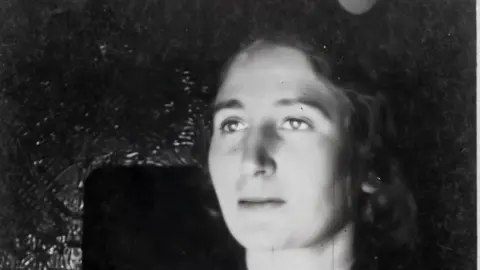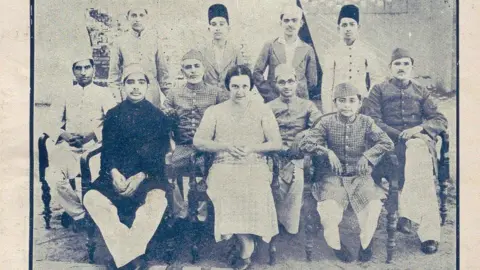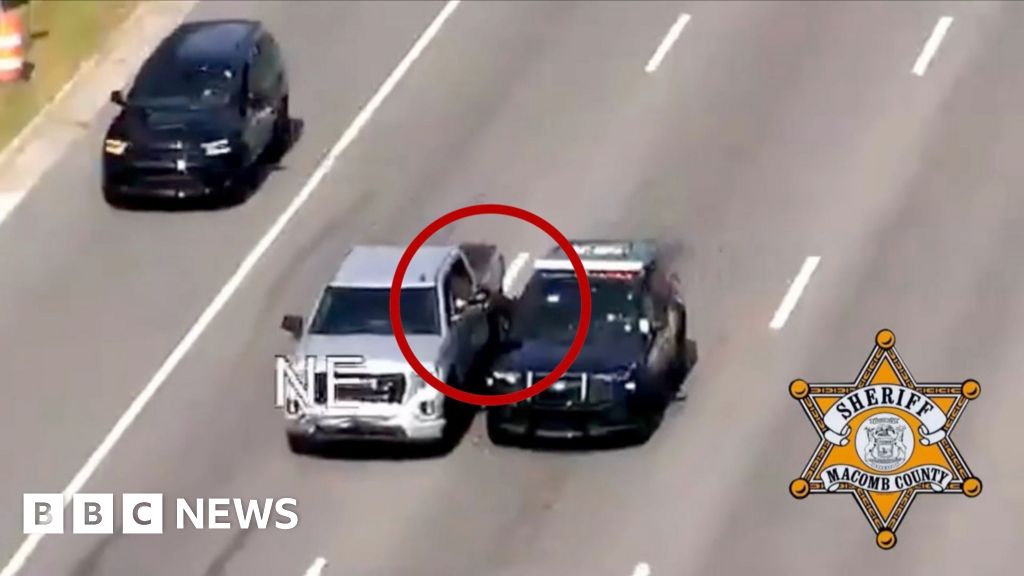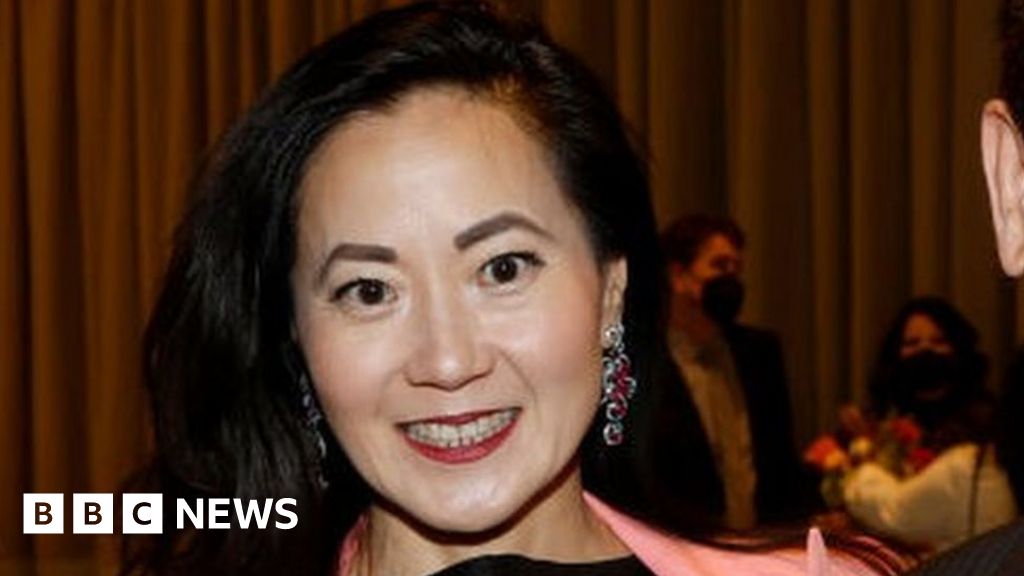ARTICLE AD BOX

 Family of Muhammad Mujeeb
Family of Muhammad Mujeeb
Gerda Philipsborn left her home in Germany to dedicate her life to serving the people of Jamia
In a Muslim graveyard in Delhi, a tombstone stands out.
It has an inscription written in the Urdu language, but beneath it lies the name of a German-born Jewish woman - Gerda Philipsborn - followed by the epithet 'Aapajaan' or 'elder sister'.
This is an unusual sight as the graves of the founders of Jamia Millia Islamia - a top Muslim university rooted in India's independence movement – rest here. Its students have upheld this legacy of political activism, including protests against a controversial citizenship law introduced by Prime Minister Narendra Modi's government in 2019.
So, how did a German Jew come to be invested in a place so distant and disconnected from her homeland?
The answer lies somewhere between friendship and a woman's search for meaning, says Margrit Pernau, author of Jamia's Aapa Jaan: The Many Lifeworlds of Gerda Philipsborn.
Pernau, who has spent a decade researching Jamia, says that though she had come across Philipsborn's name several times during her research, her life was shrouded in mystery.
Even today, not many students know about Philipsborn and her contribution to the university. Syeda Hameed, a prominent activist and historian, says there's a need for writings on her to be translated and made available to students "for their benefit and the benefit of future generations".
Philipsborn's journey from being a German memsahib - a term of respect for white European women in colonial India - to becoming Jamia's Aapa Jaan began in 1933 when she traveled to India after forging an unlikely friendship with three Indian men, Zakir Husain, Muhammad Mujeeb, and Abid Husain, who had gone to Berlin to study.
The men would go on to become the main founders of Jamia and also play important roles in India's political history, with Zakir Husain becoming the country's third president in 1967.

 Margrit Pernau
Margrit Pernau
Philipsborn's grave in the Jamia graveyard
In the 1920s and 30s, it was uncommon to find cross-national friendships, let alone close, platonic relationships between three men and a woman.
The men, who were involved in the freedom movement, often spoke to Philipsborn about their plans to build an institution that would contribute towards India's fight for freedom.
At the time, there were very few universities in British India, and even fewer ones that were not funded by the government. The men wanted Jamia to be a place where Muslim boys and girls could educate themselves, so that they could take up an active role in India's freedom struggle. They also wanted the institution to promote unity between Hindus and Muslims and love for the motherland.
These altruistic plans had a deep impact on Philipsborn. Born into a wealthy family in 1895, she had seen her life, and the world around her, change due to war, industrialisation and a wave of anti-Semitism. She understood what it felt like to be oppressed, to long for freedom and to be driven by the desire to become an instrument of change, Pernau writes.
And so, shortly after her friends left Berlin to dedicate their lives to building Jamia, Philipsborn followed them to India. But moving from a bustling, modernised Berlin to a country mired in poverty was not an easy decision. Pernau sheds light on the many times Zakir Husain forbade Philipsborn from making the journey.
"More than once she had offered to join him [in India], and more than once he had proffered 'advice, warnings, and admonitions not to come'," Pernau writes.
Meanwhile, Muhammad Mujeeb wondered how a "still young, unmarried and unaccompanied woman would fit into Jamia, whose women at this time still observed purdah [the seclusion of women from the sight of men or strangers, practiced by some Muslims and Hindus]," she writes.
But Philipsborn made the journey despite these calls for caution.
Within months, she managed to make friends with the people of Jamia and even began teaching in the university's primary school. Like the rest of the teaches there, she worked for minimal wage and agreed to dedicate her life to serving the institution.
She used the knowledge she had gained teaching at kindergartens in Germany to make education enjoyable and approachable for her students. When she was appointed the warden of a hostel for children, she took on the role of an Aapa Jaan for them, Pernau writes.
She did menial tasks like washing and oiling their hair and kept them close to her, emotionally and physically. "When the little children under her care fell sick, she attended to them with such devotion that they didn't miss their mother," Pernau says.

 Payam-e ta'lim
Payam-e ta'lim
Philipsborn with staff and students in Jamia
Philipsborn also encouraged Jamia's girls and women to play a more active role in society. When she joined the editorial team of Payam-e Ta'lim, Jamia's children's journal, she contributed articles that spotlighted the hobbies and interests of women and encouraged girls to write for the journal.
Apart from her work with the children of Jamia, Gerda also helped its founders raise funds for the university, prepare speeches and often acted as their sounding board for all matters related to teaching and politics.
But seven years after she arrived in India, her work hit a roadblock.
Amid Britain's war with Germany, German citizens in British India were viewed with suspicion, leading to their arrest and internment in camps where they endured harsh conditions, including inadequate water, blankets and food.
Philipsborn was taken to one such camp in 1940. Her internment made her fearful for her life as there was the possibility of authorities deporting her to Germany, where Hitler was persecuting the Jews. But even in the camp, she did her best to serve her inmates by organising small events to cheer them up and looking after those who had taken ill.
But a couple of months after being brought to the camp, Philipsborn developed a gastric ulcer. She was taken to a hospital for treatment and then moved back to the camp, where she stayed for a whole year.
After being released, she went back to Jamia and continued her work, but struggled to perform with the same gusto as her ulcer turned cancerous. She became increasingly weak, but tried to connect with children through her articles in the Payam-e Ta'lim.
In April 1943, Philipsborn died and was buried in the graveyard for Jamia families. "She died miles away from her family, but was surrounded by the people who loved her," says Hameed about Gerda's death.
And long after her death, her legacy as "Aapa Jaan" lives on in the corridors of Jamia, with a hostel and day care centre named after her.

 2 days ago
3
2 days ago
3








 English (US)
English (US)